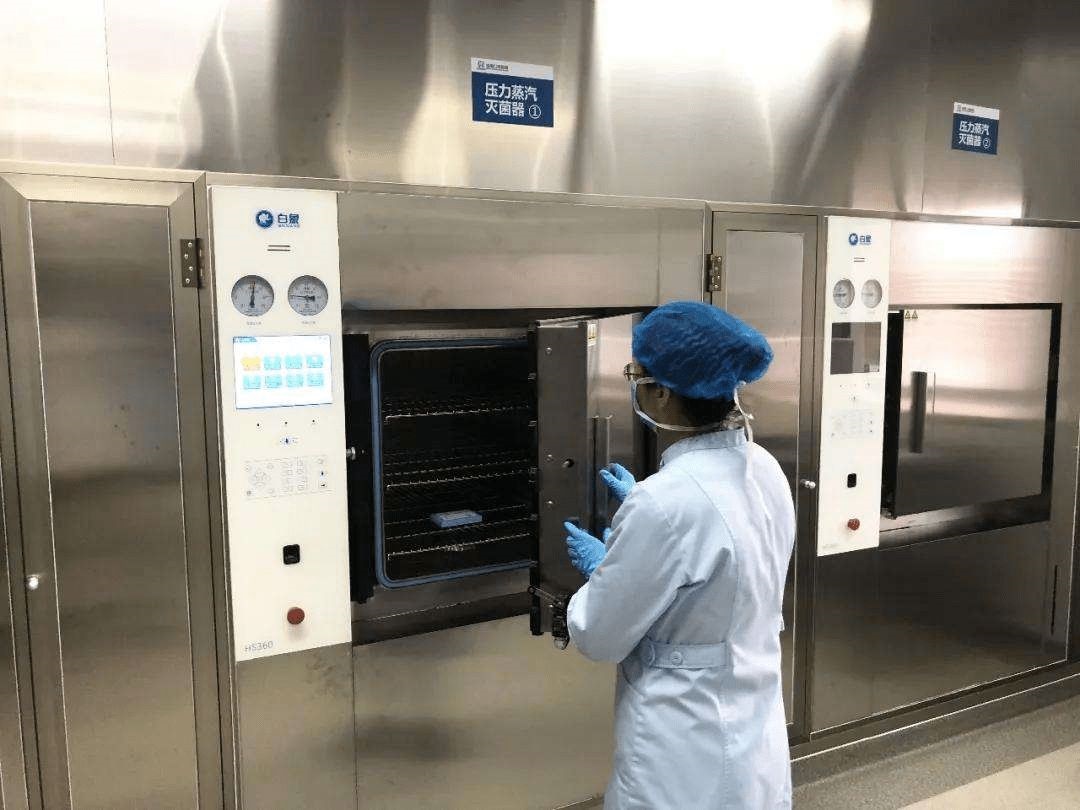What are the common medical sterilization methods?
2022-01-25

Sterilization is the use of physical or chemical methods to destroy all microorganisms including large numbers of resistant bacterial spores. Make it sterile to avoid infection and spread of disease during use.
Common medical sterilization methods include: dry heat sterilization, moist heat sterilization, gas sterilization, radiation sterilization, filter sterilization, ETC. The following is a brief introduction to these sterilization methods
Dry Heat Sterilization
Place the items in a dry heat sterilization cabinet (盒子), and use dry hot air to kill microorganisms or eliminate pyrogenic substances.
適用範圍: Glassware, metal utensils, and items that are resistant to high temperature but should not be sterilized by moist heat sterilization can all be sterilized by this method.
Dry heat sterilization conditions are generally (160-170℃)×120min or more, (170-180℃)×60min or more or 250℃×45min or more.
When dry heat sterilization is used, the items to be sterilized should have an appropriate loading method and should not be arranged too densely to ensure the effectiveness and uniformity of sterilization.
The most commonly used biological indicator for dry heat sterilization is Bacillus subtilis spores.
Moist Heat Sterilization
A method of killing microorganisms by placing the items in a sterilizer (pot), and using high-pressure saturated steam to denature the proteins and nucleic acids in the microbial cells. This method has strong sterilization ability and is the most effective and widely used sterilization method in thermal sterilization.
適用範圍: buffer solution, culture medium, clean clothes, glassware, infectious dirt and other items that will not change or be damaged when exposed to high temperature and high humidity.
Moist heat sterilization usually adopts 121℃×15min or 121℃×30min. During sterilization, the sterilized items should be loaded in an appropriate manner, and should not be arranged too densely to ensure the effectiveness and uniformity of sterilization.
The most commonly used biological indicator for moist heat sterilization is Bacillus stearothermophilus spores.
Gas Sterilization
Use the gas formed by chemical disinfectants to kill microorganisms. Gas sterilization can be subdivided into ozone sterilization and ethylene oxide sterilization.
1. Ozone Sterilization and Disinfection
Ozone has a strong sterilization and disinfection effect. The principle of sterilization and disinfection is: the molecular structure of ozone is unstable at normal temperature and pressure, and it quickly decomposes into oxygen and single oxygen molecules. The latter has strong activity and has a strong oxidizing effect on bacteria. An enzyme necessary for oxidizing glucose in bacteria, thereby destroying their cell membranes, killing it.
2. Ethylene Oxide Sterilization (排隊) 方法
The ethylene oxide sterilization is a method of sterilizing with ethylene oxide gas. It is a traditional sterilization method that can be applied to sterilization of work clothes, medical instruments, facilities, and equipment that are not resistant to heat sterilization. The ethylene oxide sterilization system mainly has the following four important factors that mutually restrict the sterilization effect:
①humidity; ②temperature; ③gas concentration; ④sterilization time.
Ethylene oxide has very strong penetration and diffusion ability, and its sterilization mechanism is mainly strong oxidation, so it has the characteristics of broad-spectrum sterilization and strong sterilization ability, and has a strong killing effect on microbial propagules and spores. .
Radiation Sterilization
1. Ionizing Radiation
Sterilize with ionizing X-rays, gamma rays.
The lethal effect of ionizing radiation on microorganisms is mainly caused by changes in intracellular biochemistry.
Safety issues of irradiated medicines and foods: radiation sterilization for medicines or foods should undergo safety tests. It is absolutely necessary to conduct a scientific and comprehensive evaluation, and high doses of radiation should be used with caution.
2. Electromagnetic Wave Radiation
(including ultraviolet [wavelength 190~350nm], infrared [wavelength 0.77~1000μm], microwave [wavelength 1~1000mm]).
3. UV Sterilization
When ultraviolet rays irradiate microorganisms, energy transfer and accumulation occurs, and the accumulation results in the inactivation of microorganisms, thereby achieving the purpose of disinfection. When bacteria and viruses absorb a dose of more than 3600~65000uW/c㎡, it has a strong destructive power to the deoxyribonucleic acid (脫氧核糖核酸) and ribonucleic acid (核糖核酸) of bacteria and viruses, which can make bacteria and viruses lose their viability and reproduction. Eliminate bacteria and viruses and achieve the effect of disinfection and sterilization.
Filter Sterilization
Physically remove microorganisms from the medium. 空氣或液體中的微生物和雜質常常用不同材料製成的膜過濾器過濾,以獲得無菌, 無雜質的空氣或液體.
過濾病毒的濾膜孔徑為 25 ~ 100nm; 過濾細菌的濾膜孔徑為 0.22 ~ 0.45μm
在詳細了解了這五種常見的殺菌方法後, 我們整理了一個匯總表,方便大家區分更清楚
工作條件, scope of application and limitations of various sterilization methods.
















